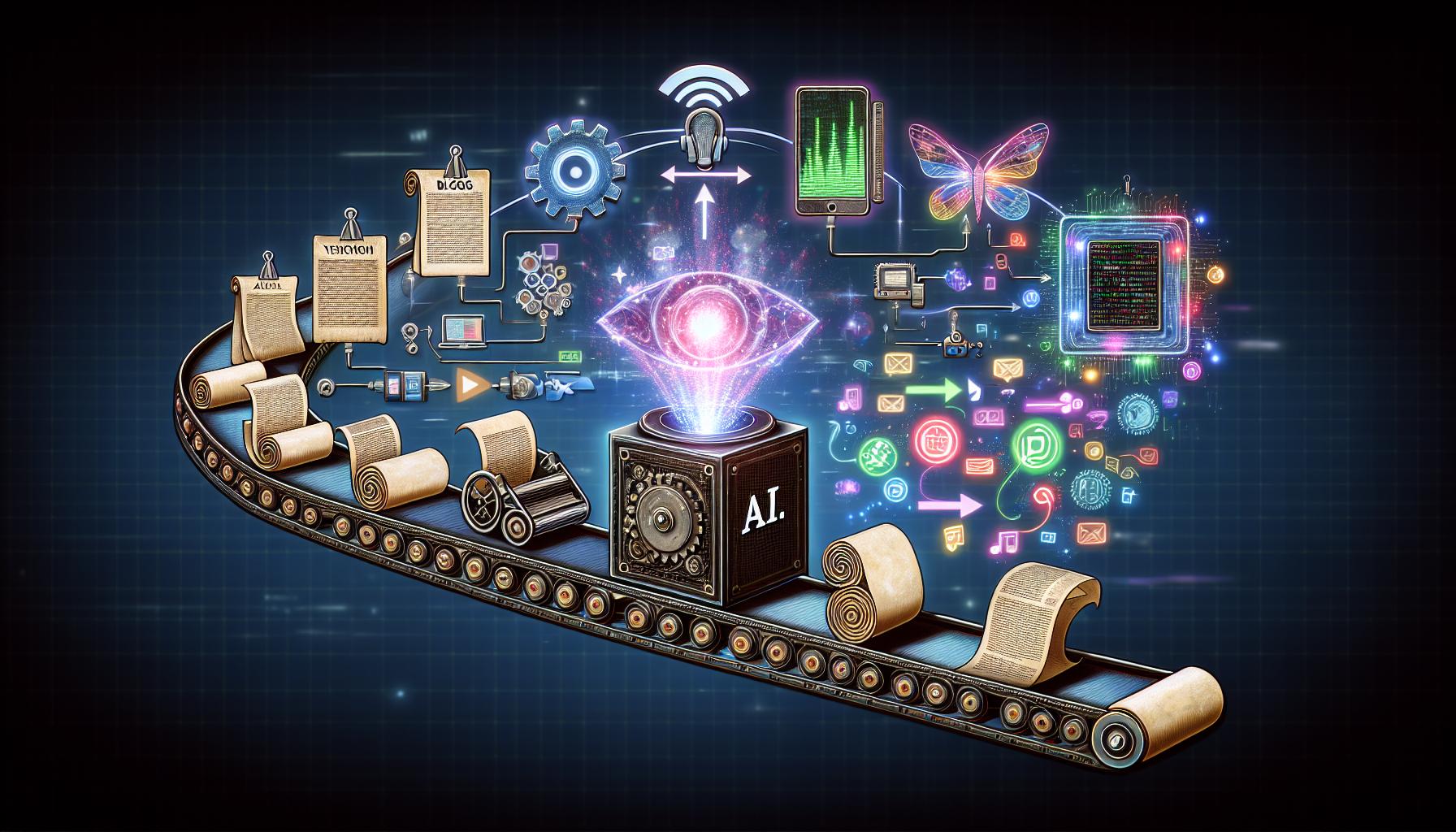Leveraging AI to Repurpose Existing Content for Maximum Value

Introduction
In today's competitive business landscape, content is king. However, consistently creating fresh content can be a daunting task. For businesses looking to stay relevant and engaging without constantly churning out new material, leveraging Artificial Intelligence (AI) to repurpose existing content offers an efficient solution. This blog will discuss how AI can help identify key themes in old content and transform it into various new formats, thereby maximizing value and saving time and resources.
The Power of AI in Content Analysis
Artificial Intelligence has made significant strides in recent years, especially in the realm of content analysis. Advanced AI tools can analyze large volumes of text to identify patterns, themes, and sentiments. By doing so, these tools can help businesses understand the core messages of their existing content and suggest ways to repurpose it effectively.
Identifying Key Themes for Repurposing
One of the primary steps in repurposing content is to identify the key themes and messages that resonate with the audience. AI tools like natural language processing (NLP) algorithms can scan through old blog posts, articles, and other written materials to extract important themes and trends. This allows businesses to pinpoint the most valuable content that can be updated and repurposed.
Converting Blogs into Video Scripts
Video content is increasingly popular among audiences, but creating videos from scratch can be time-consuming and resource-intensive. AI can streamline this process by converting written blog posts into video scripts. Tools like Lumen5 and Pictory use AI to automatically generate video content from text. These tools can add visuals, animations, and even voiceovers to create compelling videos that capture the essence of the original blog post.
Transforming Reports into Infographics
Infographics are a powerful way to present complex information quickly and clearly. AI can transform lengthy reports and data-heavy documents into visually appealing infographics. Tools like Canva and Venngage use AI to suggest layouts, graphics, and design elements that best represent the data. By repurposing reports into infographics, businesses can make their information more accessible and engaging to their audience.
Updating Old Content with New Data
One of the challenges of maintaining a content library is keeping it up-to-date. AI can assist by identifying outdated information and recommending updates based on the latest data. Tools like MarketMuse and Clearscope analyze content and suggest relevant updates and improvements. This ensures that existing content remains current and valuable to the audience.
Practical Applications and Benefits
The practical applications of repurposing content with AI are numerous. From small startups to large enterprises, businesses can benefit in several ways:
- Cost-Efficiency: Repurposing existing content reduces the need for continual new content creation, saving time and resources.
- Consistent Engagement: Updated and repurposed content keeps the audience engaged without requiring constant new material.
- Enhanced Reach: Converting content into different formats (e.g., video, infographics) broadens the audience and improves content discoverability.
- Data-Driven Updates: AI recommendations ensure content is based on the latest trends and data, improving relevance and accuracy.
Conclusion
Incorporating AI to repurpose existing content is a strategic move for businesses aiming to maximize the value of their content portfolio. By identifying key themes, converting blogs into video scripts, transforming reports into infographics, and updating old content with new data, businesses can save time, enhance engagement, and reach a broader audience. With AI, the possibilities for repurposing content are endless, offering a practical solution for maintaining a dynamic and valuable content library.




